
Thanjavur, also known as Thanjai, previously known as Tanjore, is a city in Tamil Nadu. Thanjavur is the 11th biggest city in Tamil Nadu. Thanjavur is an important center of South Indian religion, art, and architecture. Most of the Great Living Chola Temples, which are UNESCO World Heritage Monuments, are located in and around Thanjavur. The foremost among these, the Brihadeeswara Temple, built by the Chola emperor Rajaraja I, is located in the centre of the city. Thanjavur is also home to Tanjore painting, a painting style unique to the region. Thanjavur is the headquarters of the Thanjavur District. The city is an important agricultural centre located in the Kaveri Delta and is known as the Rice bowl of Tamil Nadu. Thanjavur is administered by a municipal corporation covering an area of 128.02 km2 (49.43 sq mi) and had a population of 290,720 in 2011. Roadways are the major means of transportation, while the city also has rail connectivity. The nearest airport is Tiruchirapalli International Airport, located 59.6 km (37.0 mi) away from the city. The nearest seaport is Karaikal, which is 94 km (58 mi) away from Thanjavur. The city first rose to prominence during the reign of the Cholas when it served as the capital of the empire. After the fall of the Cholas, the city was ruled by various dynasties such as the Mutharaiyar dynasty, the Pandyas, the Vijayanagar Empire, the Madurai Nayaks, the Thanjavur Nayaks, the Thanjavur Marathas and the British Empire. It has been a part of independent India since 1947.
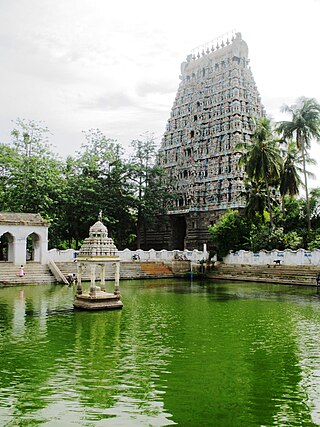
Mayiladuthurai is a town and district headquarter of Mayiladuthurai district in Tamil Nadu, India. The town is located at a distance of 256 km (159 mi) from the state capital, Chennai.
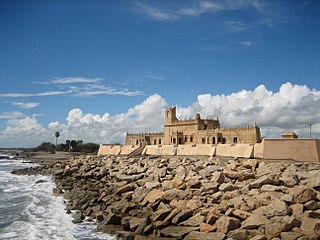
Tharangambadi, formerly Tranquebar, is a town in the Mayiladuthurai district of the Indian state of Tamil Nadu on the Coromandel Coast. It lies 15 kilometres (9.3 mi) north of Karaikal, near the mouth of a distributary named Uppanar of the Kaveri River. Tranquebar was established on 19 November 1620 as the first Danish trading post in India. King Christian IV had sent his envoy Ove Gjedde who established contact with Raghunatha Nayak of Tanjore. An annual tribute was paid by the Danes to the Rajah of Tanjore until the colony of Tranquebar was sold to the British East India Company in 1845.
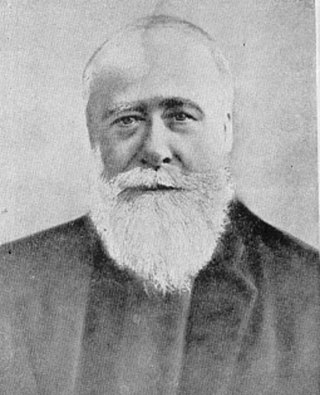
George Uglow Pope, or G. U. Pope, was an Anglican Christian missionary and Tamil scholar who spent 40 years in Tamil Nadu and translated many Tamil texts into English. His popular translations included those of the Tirukkural and Thiruvasagam.
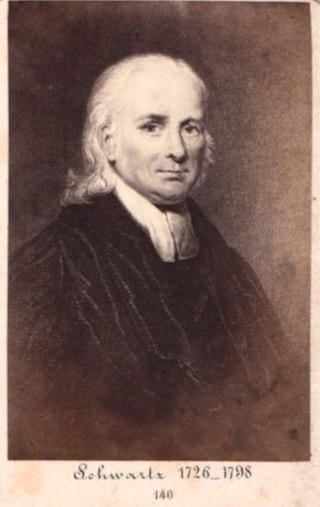
Christian Frederick Schwarz was a German Lutheran missionary to India. He was known for his linguistic skills, with knowledge of Latin, Greek, Hebrew, Sanskrit, Tamil, Urdu, Persian, Marathi, and Telugu and even used by the British to serve as an emissary of peace and sent to the court of Haider Ali in Mysore. He worked alongside the Indian royal families, tutoring the Raja Serfoji of Tanjore, and was influential in establishing Protestant Christianity in southern India.

Thanjavur painting is a classical South Indian painting style, originating in the town of Thanjavur in Tamil Nadu. The art form draws its immediate resources and inspiration from way back about 1600 AD, a period when the Nayakas of Thanjavur under the suzerainty of the Vijayanagara Rayas encouraged art—chiefly, classical dance and music—as well as literature, both in Telugu and Tamil and painting of chiefly Hindu religious subjects in temples. It is distinguished by its famous gold coating. However, it can safely be surmised that Thanjavur painting, as we know it now, originated in the Maratha court of Thanjavur (1676–1855). It has been recognized as a Geographical indication by the Government of India in 2007–08.

Saraswathi Mahal Library, also called Thanjavur Maharaja Serfoji's Saraswathi Mahal Library is a library located in Thanjavur (Tanjore), Tamil Nadu, India. It is one of the oldest libraries in Asia established during 16th century by Nayakar kings of Thanjavur and has on display a rare collection of Palm leaf manuscripts and paper written in Tamil and Sanskrit and a few other indigenous languages of india. The collection comprises well over 49,000 volumes, though only a tiny fraction of these are on display. The library has a complete catalog of holdings, which is being made available online. Some rare holdings can be viewed on site by prior arrangement. Encyclopedia Britannica mentions the library as the "Most remarkable library of India".

Serfoji II Bhonsle also spelt as Sarabhoji II Bhonsle, was the last ruler of the Bhonsle dynasty of the Maratha principality of Tanjore to exercise absolute sovereignty over his dominions. His descendants, however, have managed to thrive as titular Maharajahs of Thanjavur to the present day. Serfoji belonged to the Bhonsle clan of Marathas and was descended from Chhatrapati Shivaji Maharaj's half-brother Venkoji. He ruled Thanjavur from 1798 until his death in 1832.

The Thanjavur Nayakdynasty were the rulers of Thanjavur in the 15th and 17th centuries. The Nayaks, who belonged to the Telugu-speaking Balija social group were originally appointed as provincial governors by the Vijayanagara Emperor in the 15th century, who divided the territory into Nayak kingdoms which were Madurai, Tanjore, Gingee and Kalahasthi. In the mid-15th century they became an independent kingdom, although they continued their alliance with the Vijayanagara Empire. The Thanjavur Nayaks were notable for their patronage of literature and the arts.

Rev. N. Samuel of Tranquebar was a professor in divinity, pastor in the Tamil Evangelical Lutheran Church (T.E.L.C.), and a hymnodist. He was a famous poet and author of many books. He was also the first member of the Leipzig Evangelical Lutheran Mission (L.E.L.M.) Council.

Thanjavur Marathi people, are a Thanjavur Marathi-speaking ethno-linguistic group, who reside in the central and northern parts of the Indian state of Tamil Nadu. They are the descendants of Marathi administrators, soldiers and noblemen who migrated to this region during the rule of the Thanjavur Maratha kingdom. Thanjavur was a Maratha kingdom in Tamil Country, until the British East India Company dethroned the last Thanjavur Maratha king, Shivaji of Thanjavur. It was founded by Maratha Warrior King Chatrapati Shivaji's half-brother, Ekoji alias Venkoji Rajē Bhonsalē. The Kshatriyas use Maratha, while the Brahmins use the surname Deshastha.

The Thanjavur Maratha kingdom ruled by the Bhonsle dynasty was a principality of Tamil Nadu between the 17th and 19th centuries. Their native language was Thanjavur Marathi. Venkoji was the founder of the dynasty.
The CSI Tiruchirappalli Thanjavur Diocese is a diocese of Church of South India in Tamil Nadu state of India. The diocese is one among the 24 dioceses of Church of South India and was one of the first 14 dioceses to be formed at the inaugural of the Church of South India in 1947.

Thanjavur District was one of the districts in the erstwhile Madras Presidency of British India. It covered the area of the present-day districts of Thanjavur, Tiruvarur, Nagapattinam, Mayiladuthurai and Aranthangi taluk, Karambakkudi taluk of Pudukkottai District in Tamil Nadu. Apart from being a bedrock of Hindu orthodoxy, Tanjore was a centre of Chola cultural heritage and one of the richest and most prosperous districts in Madras Presidency.
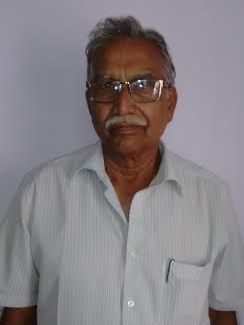
Kudavayil Balasubramanian is an archaeologist from Tamil Nadu, India. He is former curator and publication manager at Saraswathi Mahal Library located at Thanjavur. He is credited with discovering more than 100 inscriptions, coins, copper plates, sculptures, and paintings now in museums and temples in that state.

Zion Church is one of the oldest churches in Tharangambadi (Tranquebar), a Danish settlement in Nagapattinam district in the South Indian state of Tamil Nadu. It is in the premises of Fort Dansborg, built in the land ceded by Thanjavur king Ragunatha Nayak in an agreement with Danish Admiral Ove Gjedde in 1620 and acted as the base for Danish settlement in the region during the early 17th century. The Church was built in 1701 A.D by Rev. Bartholomaus Ziegenbalg and has records from the 18th and 19th centuries. He is believed to be the first Protestant missionary in India and the Church is believed to be the first Protestant Church in India.

Thanjavur Chariot festival is a historical event associated with the Big Temple, Thanjavur, Tamil Nadu, India.

The Punnainallur Kailasanathar Temple, is a Hindu temple dedicated to Shiva located at Punnainallur near Thanjavur in the state of Tamil Nadu, India.
Thanjavur Palace Devastanam is the name of a group of temples attached to the Palace Devastanams, Thanjavur, Tamil Nadu, India.

Mukthambal chatram is a chatram located at Orathanad, Thanjavur district, Tamil Nadu, India. This was built by Serfoji II, the Maratta king of Thanjavur.



















